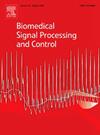模拟神经退行性帕金森病的治疗,利用光电混合刺激高效的β带神经活动
IF 4.9
2区 医学
Q1 ENGINEERING, BIOMEDICAL
引用次数: 0
摘要
光遗传-电混合刺激对不同神经元的活动提供了强大而微妙的控制。由于脑基底神经节(BG)和丘脑(Th)是帕金森病(PD)损伤或刺激的目标,我们考虑了一个完整的BG-Th网络模型,该模型由BG和Th的所有神经元部分组成。为了控制PD的症状,我们在考虑的模型中引入了两种不同特征的混合刺激,并研究了大脑不同部位神经活动的影响过程和功能。为了实现这一目标,混合刺激被认为是两种光刺激与盐紫红质(NpHR)和通道紫红质-2 (ChR2)视蛋白以及单相和双相电深部脑刺激(DBS)的各种组合。首先,我们研究了光致nphr -单相DBS和chr2 -双相DBS混合刺激对β活性异常放电模式和同步过度振荡的作用。误差指数(EI)、β带活度(βact)、平均放电率(AFR)和局部场电位(LFP)是评价该方法对BG-Th模型神经活动有效性的标准。根据实验结果,提出了NpHR光刺激和单相电刺激相结合的最优刺激方案。我们的研究结果表明,低强度和持续时间的混合刺激对抑制PD异常行为的影响最大,造成的组织损伤最小。此外,该方法还为PD的精确控制提供了新的思路。本文章由计算机程序翻译,如有差异,请以英文原文为准。
Modeling the neurodegenerative Parkinson’s disease treatment with high effectiveness of beta-band neural activity using the optogenetic-electrical hybrid stimulation
Optogenetic-electrical hybrid stimulation provides powerful and subtle control over activity of distinctive neurons. Since Basal Ganglia (BG) and Thalamus (Th) of brain are target of damage or stimulation in Parkinson’s disease (PD), we have considered a complete BG-Th network model which consists of all neuronal parts of BG and Th. In this paper, to control signs of PD, we have introduced two hybrid stimulations with different characteristics in considered model, and have investigated the influence process and the function of the neural activities of different parts of brain. To achieve this, hybrid stimulations have been considered in various combinations of two optical stimulations with Halorhodopsin (NpHR) and Channelrhodopsin-2 (ChR2) opsins and monophasic and biphasic electrical deep brain stimulations (DBS). Initially, function of the hybrid stimulation of optogenetic NpHR-Monophasic DBS and ChR2-Biphasic DBS on the abnormal firing pattern and synchronized excessive oscillations of the beta activity have been examined. Error Index (EI), beta band activity and average firing rate (AFR) and Local Field Potential (LFP) are the evaluation criteria that we have used to effectiveness of our proposed method on neural activity of BG-Th model. According to the results, hybrid stimulation of NpHR optical stimulation beside mono phase electrical stimulation with effective results has been introduced as optimal stimulation. Our findings reveal that hybrid stimulation in low intensity and duration has the most influence on suppression of the abnormal PD behaviour and causes the least tissue damage. Besides, our proposed method supplies novel insights for accurate control on PD.
求助全文
通过发布文献求助,成功后即可免费获取论文全文。
去求助
来源期刊

Biomedical Signal Processing and Control
工程技术-工程:生物医学
CiteScore
9.80
自引率
13.70%
发文量
822
审稿时长
4 months
期刊介绍:
Biomedical Signal Processing and Control aims to provide a cross-disciplinary international forum for the interchange of information on research in the measurement and analysis of signals and images in clinical medicine and the biological sciences. Emphasis is placed on contributions dealing with the practical, applications-led research on the use of methods and devices in clinical diagnosis, patient monitoring and management.
Biomedical Signal Processing and Control reflects the main areas in which these methods are being used and developed at the interface of both engineering and clinical science. The scope of the journal is defined to include relevant review papers, technical notes, short communications and letters. Tutorial papers and special issues will also be published.
 求助内容:
求助内容: 应助结果提醒方式:
应助结果提醒方式:


